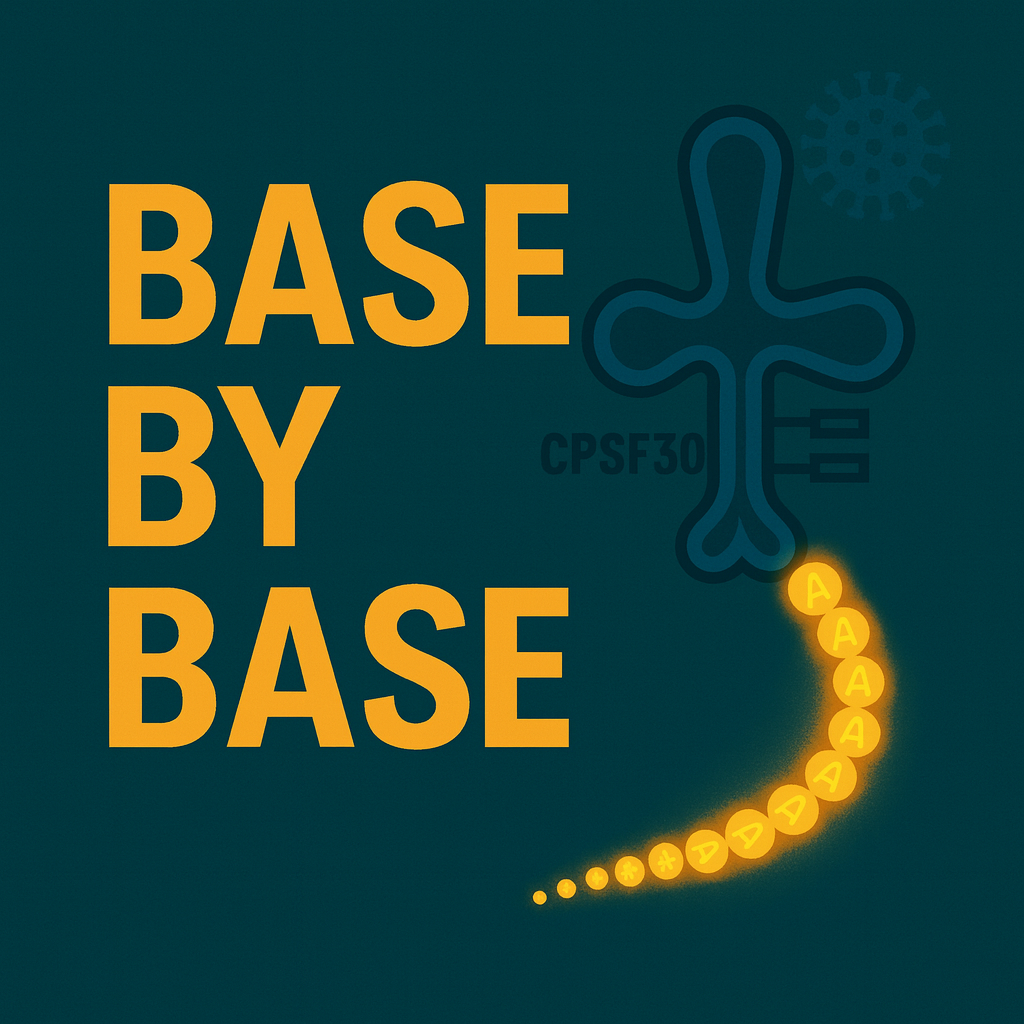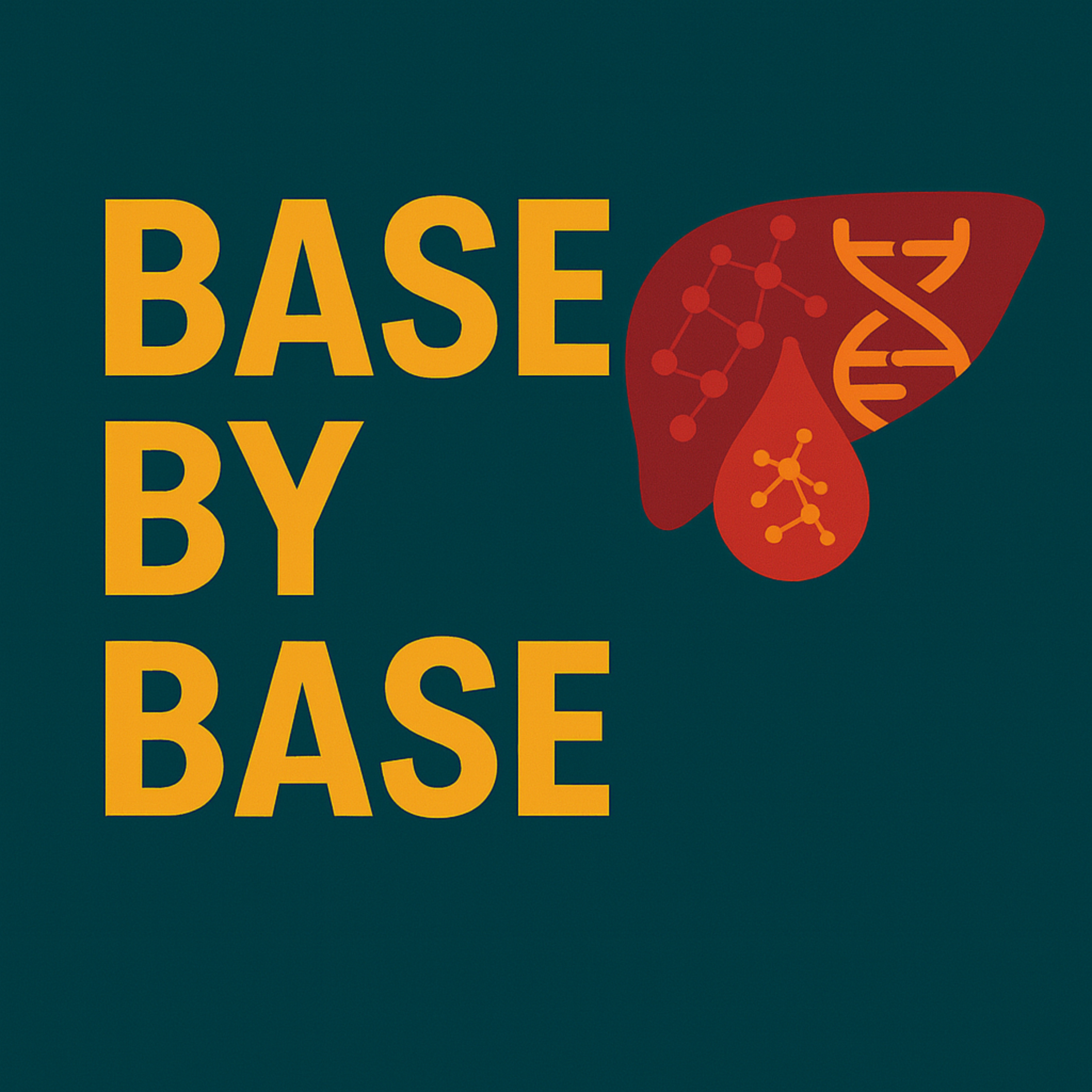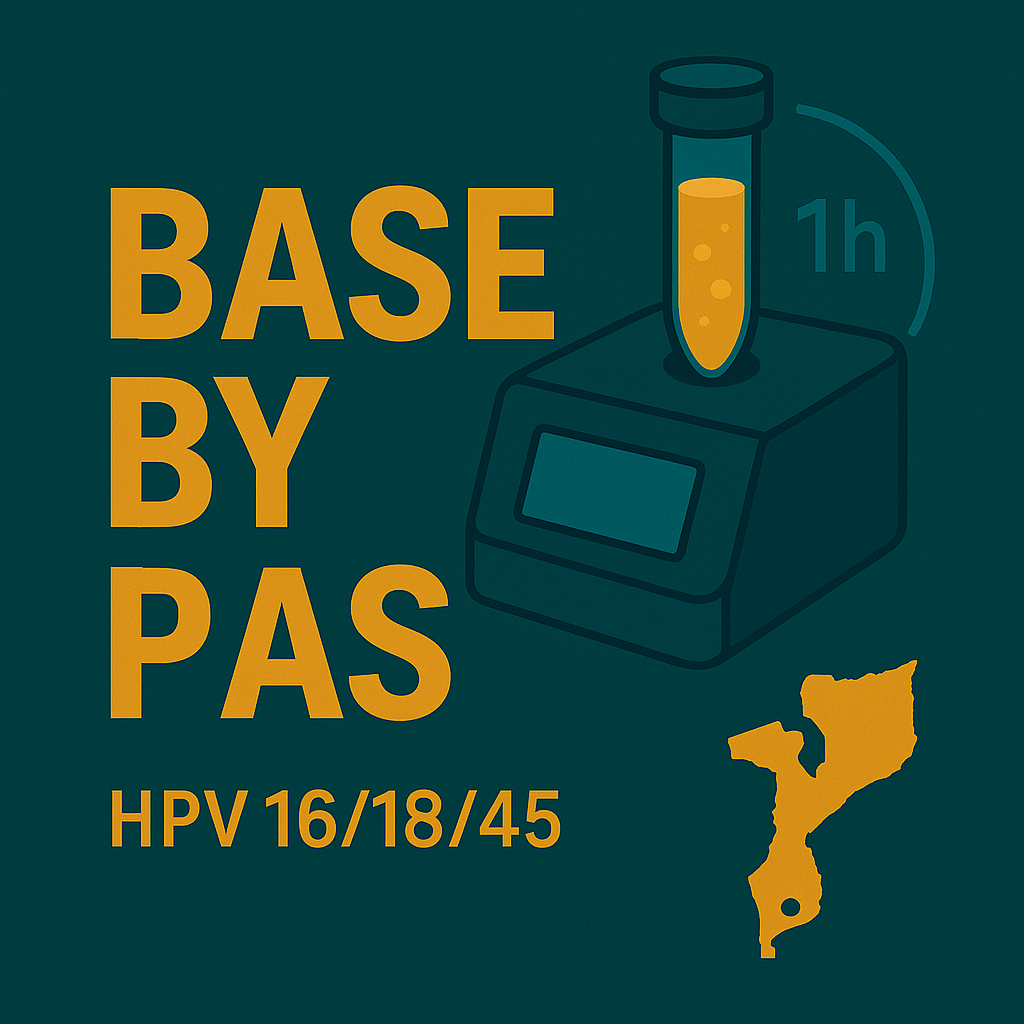Episode Transcript
[00:00:00] Speaker A: Foreign.
Welcome to Base by Base, the papercast that brings genomics to you wherever you are.
Have you ever stopped to think about how these tiny, almost invisible things, viruses, can just completely rewrite the basic rules inside our own cells?
And you know, what if I told you that when they attack, parts of our DNA that are normally locked down tight, sometimes even called junk, suddenly wake up and become like major players in the whole fight.
[00:00:39] Speaker B: It's a huge shift, isn't it? A really profound change. We're talking about These non coding RNAs, things that are usually silent, practically background noise. But then under the intense pressure of a viral infection, suddenly they're everywhere. They become incredibly abundant. And this isn't just some random cellular reaction. You know, it seems like a deliberate move in this constant B, the host and the virus. And it has some really significant consequences for how our bodies respond, maybe even how certain diseases develop.
[00:01:07] Speaker A: Exactly. So today we're going to take a deep dive into some really remarkable research. It peels back the curtain on a molecular mechanism that was, well, completely unexpected. It shows how viruses don't just barge in, they actually hijack our cells machinery. They turn these normally suppressed bits of our genome into really powerful new players.
It definitely makes you reconsider what, what we thought we knew about how viruses operate.
Okay, before we get deeper into the weeds here, we really want to give a shout out to the fantastic work by Azra Lauria, Sahil B. Shaha and Britt A. Glansinger, and of course their colleagues at the University of California, Berkeley and Vanderbilt University School of Medicine. Their team has genuinely pushed forward our understanding of how viruses can manipulate our own genome. Looking specifically at this tricky area of non coding RNA regulation.
[00:01:53] Speaker B: Yeah, absolutely. And to really get why this is such a big deal, we should probably talk about SINES first. That stands for short interspersed nuclear elements.
Now, these things are everywhere in mammalian genomes. They make up something like 10% of our DNA. Huge amount. Think of them as maybe genetic fossils. Usually they're kept very quiet in healthy cells, but they can be transcribed by an enzyme called RNA polymerase III. We usually just call it PUL3. And that produces these short non coding RNAs or NCRNAs.
[00:02:22] Speaker A: Okay, sines. NCRNAs.
[00:02:24] Speaker B: Yeah.
[00:02:24] Speaker A: So. So why are these important? Why should we care about them? Well, it turns out they're not just sitting there doing nothing. When cells get stressed, and that could be from like heat shock, chronic inflammation, or crucially here, viral infections, these NCRNA. NCRNAs start piling up a lot. And this buildup isn't harmless. These NCRNAs actually have real potential to mess with gene regulation and even contribute to diseases. For example, there's a type of human sign called Olu. Its NCRNAs can switch on something called the NLRP3 inflammasome, which is a major inflammation driver and it's linked to things like age related macular degeneration. So yeah, these bits of junk can cause serious problems.
[00:03:02] Speaker B: Precisely. And we've known for a while now that this accumulation, this buildup of sin NCRNAs, is a kind of signature of cellular stress. But the exact molecular switches, the triggers that cause this surge, especially when a virus attacks, that's largely been a black box, a real mystery. And that's the core the study decided to tackle. They used a gamma herpes virus, specifically MHV 68, the mouse version, as their model sister to investigate.
[00:03:31] Speaker A: Right, so the how was such a mystery. How did the researchers actually go about solving it? What kind of tools did they use to, you know, probe this cellular puzzle?
[00:03:38] Speaker B: Well, they used a really clever combination of approaches. A multi pronged attack, you could say. First they needed to know where key proteins were latching onto the genome. For that, they used chromatin immunoprecipitation sequencing, or GPSEC. This basically let them create a map showing where RNA polyphenol polymerase III, specifically a part of it called POL3A and also a really important factor for RNA processing called CPSF 30 were located. They compared this in normal uninfected mouse cells versus cells infected with MHV68. So it gave them the where.
[00:04:09] Speaker A: Okay, so they mapped the locations. What next?
[00:04:11] Speaker B: So next came something really innovative, especially for dealing with signs. The problem with sign is they're super repetitive. Imagine trying to find one specific phrase in a book where almost every page looks the same. It's tough. So they developed a custom deep learning model, an AI, which they called Sambar Net. It's a type of AI called a convolutional neural network. And they trained it specifically to spot very subtle differences in the DNA sequences of these B2SCN genes, the mouse equivalent of human alice. Differences that could tell apart the cynanes that got switched on by the infection from those that stayed off. This was absolutely critical for handling the repetitive nature of these elements.
[00:04:51] Speaker A: Wow. Okay. So they built their own AI tool just to analyze these tricky sequences. That's impressive.
[00:04:55] Speaker B: It really is. But they didn't stop there. They also did a lot of RNA analysis. They used methods like northern blotting to check if these SNA NCRNAs were getting a poly tail, that's a string of A bases added to the N usually seen on messenger RNAs. And they used loss of function experiments. This means they used techniques like CIRNA knockdown to specifically get rid of certain proteins like NUT21 or CPSF30 and see if that stopped the RNAs from getting the poly tail or from accumulating testing necessity.
[00:05:23] Speaker A: Got it. So they looked at the RNA itself and tested what proteins were needed.
[00:05:26] Speaker B: Exactly. And finally, to figure out what proteins were actually physically grabbing onto these SINCRNAs during the infection, they used a technique called Chirp Ms. That stands for Comprehensive Identification of RNA Binding Proteins Coupled with mass spectrometry. It sounds complicated, but it essentially lets you fish out the specific RNA you're interested in, in this case, the B2 sine and CRNAs, and see exactly which proteins come along for the ride.
[00:05:52] Speaker A: Okay, that is quite the toolkit. ChipSec for location, a custom AI for sequence analysis, RNA blots, knockdowns, and then chip EMS to see the interactions. They were looking at it from all angles. Not just what was happening, but where, how, and with what. So after all that digging, what were the big discoveries?
[00:06:10] Speaker B: Right, so the first big takeaway was that just having more poll third recruited isn't the full explanation. Yes, the MHV68 infection definitely caused pol third to bind to thousands more places, including lots of B2 assignee and TRNA genes. About 7200 new spots, in fact. Pulther was clearly busier.
[00:06:29] Speaker A: Ah, but there's a catch, right? Because you said it's only part of the story. So even with more polter showing up, that didn't quite explain the huge jump in the amount of they were seeing. It's like you hire more workers, but the factory output goes through the roof way more than you'd expect from just those extra hands.
[00:06:46] Speaker B: Exactly. That. They found only a pretty weak link. A weak correlation between how much pol throid was sitting at a sign gene and how much cyanine NCRNA was actually produced from it. That was a major clue. It told them immediately, okay, something else must be going on here. There has to be another layer of control beyond just turning up the transcription volume.
[00:07:06] Speaker A: Okay, so what was that something else?
[00:07:09] Speaker B: Well, that led straight to their second key. Finding the signs that respond to infection have specific sequence features that promote polyedenylation. Remember that AI tool, Sam Barnet? It was incredibly good at predicting which B2SNES would get activated. And more importantly, it pinpointed why it Found a specific sequence pattern, a little motif containing TGT called a tau motif, followed by a standard looking signal for adding a poly tail, the kind you usually see in messenger RNAs. A PAS or polyatomylation signal sequence, a secret code.
[00:07:39] Speaker A: So the AI found this Tau motif plus the PAs acting like a signal flag within the cyanidna itself. Like a specific instruction saying, hey, polydinylation machinery, come over here.
[00:07:49] Speaker B: Pretty much. And they showed it was functional. The stronger that combined signal was, the more B2SIN NCRNA accumulated. If they deliberately weakened that signal through mutations, the cyan expression dropped. It was clearly important for driving up the RNA levels.
[00:08:04] Speaker A: Okay, so specific acines have a signal for polyadenylation. What did they find out about the polyadenylation itself?
[00:08:12] Speaker B: That brings us to finding number three. These infection induced cyan RNAs really are polyetinylated. And getting that tail depends on parts of the normal MRNA processing machinery. Their northern blots showed it quite clearly. The B2SIN and CRNAs from infected cells appeared as this longer kind of smeared band. But when they treated the RNA to remove any poly tails, that smear collapsed into a much sharper, shorter band. Proof of the tail.
[00:08:38] Speaker A: Right, and that's weird for polo Third transcripts like cyanes, they don't usually get these tails, do they? That's more an MRNA thing for both tails. So the these non coding rna's are getting stabilized like mRNA's. That's a big shift in understanding how they're handled.
[00:08:50] Speaker B: It is a big shift and they confirm the how using those knockdown experiments we mentioned. When they depleted nut 21. That's a protein known to recognize the tau motif or CPSF 30, a core piece of the polyadenylation machine.
Both knockdowns significantly cut down on both the polyadenylation and the total amount of B2 sine NCRNAs. Interestingly, knocking down another factor, CTSF73, didn't have much effect, suggesting some specificity in which parts of the polyedenylation complex are crucial for this particular process.
[00:09:21] Speaker A: Okay, so sines get polyadenylated by specific factors during infection. How does the machinery even get there?
[00:09:28] Speaker B: Ah, great question. That's their fourth finding. The virus infection actually drives the recruitment of this MRNA polyadenylation machinery directly to the sine locations. And this depends on polythird being active there. The chip P Sec data again, it showed CPSF 30, that key polyadenylation factor physically moving to the highly expressed B2 sine genes. But only during infection. And critically, this Wasn't independent. If they knocked down BR1, which is essential for Polar third to even start transcribing, then CPSF 30 didn't get recruited to the signs anymore.
[00:09:58] Speaker A: Wow. So it's like Paul III acts as a beacon and then once it's there and active, it somehow helps wave over the polyanylation crew. A coupled process. It's not just that the CNRNA gets modified later, the machinery is brought right to the factory floor, so to speak. Linked to the transcription itself.
[00:10:14] Speaker B: Exactly. A tightly coupled event. And that connection became even more direct with their fifth finding. The B2IMU and CRNA's themselves physically interact with the entire MRNA cleavage and polyadenylation complex, specifically during infection.
Remember the CRPMs phishing for the RNA partners that confirmed it? They pulled down B2SIN NCRNAs from infected cells and found they were bound to the whole CPSF complex, plus other related factors. And importantly, they didn't see these interactions in uninfected cells. It's an infection induced assembly on the sign rna.
[00:10:47] Speaker A: So the sign RNA itself becomes a scaffold almost during infection. It gathers this whole complex around it. That's quite a roll for supposedly junk rna.
[00:10:56] Speaker B: It really changes the perspective. And the final piece, finding number six really broadened the scope. This whole mechanism isn't just for mouse signs. It also happens at other Pol3 genes and even in human cells. They found CPSF30 was also recruited to TRNA genes in the infected mouse cells. And maybe even more importantly, they saw the same thing, CPSF 30 recruitment happening at human ALU elements, our version of signs, and human TRNA genes in human HeLa cells.
[00:11:22] Speaker A: Whoa. Okay, so this isn't just a weird mouse virus thing. It looks like a fundamental mechanism, a kind of non standard job for the MRNA polyadenylation machinery that works across different poltar transcripts and well, in us too. That suggests it could be relevant for human biology. Maybe human diseases related to viruses or inflammation.
[00:11:39] Speaker B: Absolutely. That's the big implication. So if we pull all these findings together, what the study really shows is this novel inducible link between POL3 transcription and this MRNA style polyadenylation. It happens during herpesvirus infection. And it's critical because adding that poly A tail stabilizes these syncrnas, preventing their rapid degradation and leading to that dramatic pileup we talked about. It's a whole new layer of regulation.
[00:12:04] Speaker A: Okay, so this is clearly a major step forward, but what does it really mean for us, practically speaking? What are the big picture implications?
[00:12:13] Speaker B: Well, there are a few key implications I think first, it definitely deepens our understanding of how viruses cause disease, their pathogenesis.
By hijacking this polyadenylation machinery for polthar transcripts, the virus essentially boosts the levels of these sin NCRNAs. And as the authors put it, this could amplify the mutagenic and inflammatory potential of these elements. That's especially concerning because many DNA viruses that are known to induce cyans are also linked to cancer.
[00:12:39] Speaker A: Right, so it could be part of how some viruses contribute to cancer development.
[00:12:42] Speaker B: Possibly, yes. Second, it's a really great example of the power of deep learning in biology. Dealing with highly repetitive sequences like sines is notoriously difficult with standard analysis methods, but their Sam Barnett AI was able to cut through that complexity and pinpoint these subtle but crucial regulatory signals. It really showcases how AI can help us decode the genome.
[00:13:05] Speaker A: Yeah, finding that tau motif and PA signal is key.
[00:13:08] Speaker B: Definitely. And third, it points towards a much broader biological relevance. This inducible poly annihilation of pull thera transcripts probably isn't limited to just signs or just herpes iris infections. It might be a more general response to various kinds of cellular stress. And it could affect other polarity transcripts too, like TRNAs or human ALICE.
So it suggests this MRNA polydinylation machinery has a wider sort of moonlighting role in gene regulation than we previously thought.
[00:13:35] Speaker A: That's fascinating. A whole new function for a well known process.
But as always in science, discovery leads to more questions. Right. Are there still gaps in our understanding what comes next?
[00:13:45] Speaker B: Oh, absolutely. Many exciting questions remain. For instance, how exactly does CPSF get recruited to these pol3 sites? What's the specific signal, especially during infection? Is it a protein interaction, A change in the chromatin? We don't know the precise molecular handoff yet. Also, the exact mechanism of RNA cleavage needs clarification. Pol3 termination is different from poll second termination. So how does that mesh with the standard cleavage and polyadenylation process? And what about those other factors in the complex like CPSF 73, which didn't seem essential here? What are they doing? There's still a lot to figure out about the nuts and bolts. The study really just cracked open the door.
[00:14:22] Speaker A: So lots more digging to do for sure.
[00:14:24] Speaker B: But the core message, the take home insight from this work is really powerful. It's that viral infection isn't just about turning genes on or off. It can fundamentally change how RNAs are processed, particularly these non coding ones, in this case Gamma herpes viruses. This have of clever strategy. They hijack the cell's own MRNA polyadenylation system to add tails to pol's their made sin rna's. This makes them stable, causes them to accumulate massively and potentially leads to all sorts of trouble for the host cell, right?
[00:14:51] Speaker A: It's this inducible, tightly linked relationship between pole feed making the RNA and the MRNA machinery stabilizing it. A really unexpected and frankly sophisticated move by the virus in this ongoing host pathogen conflict.
So thinking about that for you listening, what could this new understanding mean? Could it lead to new ways to develop antiviral drugs, perhaps by targeting this unusual polyedenylation step?
Or could it help us understand the role These non coding RNAs play in other diseases driven by stress or inflammation? Could blocking this pathway be a future strategy? Lots to think about this episode was based on an Open Access article under the CCBY 4.0 license.
You can find a direct link to the paper and the license in our episode description. If you enjoyed this, follow or subscribe in your podcast app and leave a five star rating. If you'd like to support our work, use the donation link in the description. Thanks for listening and join us next time as we explore more science base by base.




